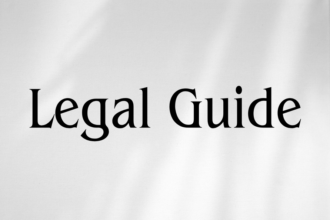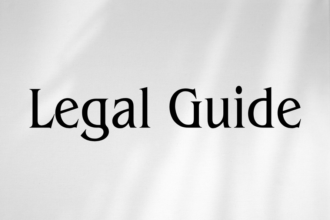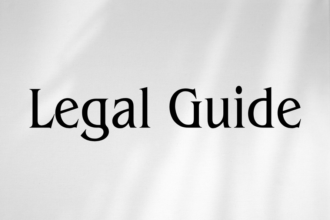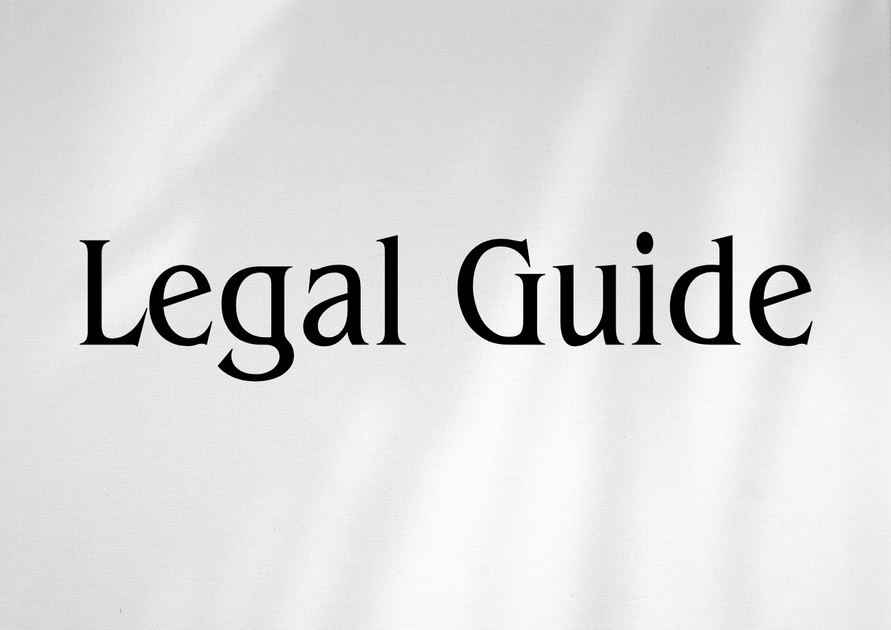Introduction
The rapid transformation of Saudi Arabia’s economy and infrastructure, driven by Vision 2030, has placed the aviation sector at the forefront of national development. The Kingdom’s legal environment is evolving swiftly to support this growth, from major airport expansions to regulatory frameworks that govern flight operations, airspace, and passenger rights. For UAE-based companies, legal practitioners, aviation stakeholders, and multinational organizations operating in or with Saudi partners, understanding the intricacies of Saudi aviation law has never been more essential. This article delivers a comprehensive, consultancy-grade review of the current aviation legal landscape in Saudi Arabia, offering expert insights, practical guidance, and clear analysis—especially relevant given the increasing integration and cooperation across the GCC, including the UAE’s ongoing legal reforms through 2025 and beyond. Whether your objective is regulatory compliance, market entry, or risk mitigation, this overview is designed to empower your decision-making and safeguard your interests in one of the Gulf’s most dynamic sectors.
Table of Contents
Aviation Law Framework in Saudi Arabia
Key Regulatory Authorities: General Authority of Civil Aviation (GACA)
Legal Basis: National and International Aviation Instruments
Aircraft Operation and Airworthiness Regulations
Airport Management and Commercial Rights
Passenger Rights, Consumer Protection, and Dispute Resolution
Compliance Strategies and Risks of Non-Compliance
Comparison with Previous Laws and UAE Aviation Law 2025 Updates
Case Studies and Practical Scenarios
Best Practices and Forward-Looking Perspectives
Aviation Law Framework in Saudi Arabia
Overview of Legislative Landscape
Saudi Arabia’s aviation law regime is built upon a combination of national statutes, royal decrees, ministerial regulations, and international conventions. The regulatory environment is primarily shaped by:
- General Authority of Civil Aviation (GACA) Regulations.
- Civil Aviation Law (issued by Royal Decree No. M/44 of 18/07/1426H).
- International conventions including the Chicago Convention (1944) and various bilateral air service agreements.
This legislative foundation governs all aspects of air navigation, safety and security, licensing, commercial rights, liability, and accident investigation, with an increasing focus on modernization and global alignment.
Significance for UAE Stakeholders
Close economic ties and extensive passenger and cargo movements make regulatory alignment vital between UAE and Saudi Arabia. For UAE investors, airlines, ground service providers, and MRO (maintenance, repair, and overhaul) entities, up-to-date legal knowledge facilitates market entry, partnership formation, and dispute avoidance. Regulatory updates—such as enhanced digital clearance systems, airport privatization, and strengthened consumer protections—demand careful monitoring for ongoing compliance and competitive advantage.
Key Regulatory Authorities: General Authority of Civil Aviation (GACA)
Authority and Scope
The General Authority of Civil Aviation (GACA) is the central body overseeing Saudi Arabia’s aviation sector. Under Royal Decree No. M/44 and Ministerial Resolutions, GACA is vested with the following powers:
- Issuing and enforcing aviation regulations, technical standards, and operational requirements.
- Managing safety oversight and certification of airports, carriers, and personnel.
- Negotiating and implementing international agreements and airspace management protocols.
- Supervising consumer protection, market competition, and compliance activities.
Recent Regulatory Initiatives
Key GACA initiatives in line with Vision 2030 and global best practices include:
- Privatization of airports and enabling foreign investment.
- Modernization of air navigation systems and airspace restructuring.
- Introduction of electronic licensing and safety management data systems.
- Increased oversight of environmental impact, in line with ICAO standards.
For UAE-based operators and advisers, engaging directly with GACA for clarifications, licensing, or dispute resolution is recommended.
Legal Basis: National and International Aviation Instruments
Core Statutes and Decrees
The principal legal instruments shaping Saudi aviation law are:
- Civil Aviation Law (Royal Decree No. M/44, 18/07/1426H): Comprehensive code for air navigation, operations, liability, security, and licensing.
- Implementing Regulations and Executive Rules: Detailed technical standards, regularly updated by GACA to address evolving risks and technological advances.
- Anti-Terrorism and Security Legislation: National security decrees impacting aviation security controls.
Key International Commitments
- Convention on International Civil Aviation (Chicago Convention, 1944): Provides framework for international air services, safety, airspace sovereignty, and regulatory cooperation.
- Montreal Convention (1999): Governs the liability of carriers for passengers and cargo, introducing unified claims standards and compensation.
- Bilateral and Multilateral Air Transport Agreements: Set conditions for air traffic between Saudi Arabia and partner states including the UAE.
Application to UAE Stakeholders
Operators from the UAE benefit from reciprocal regulatory arrangements, avoiding potential conflicts of law. However, while the legal principles are often aligned, exact procedural and documentary requirements may differ. For instance, Saudi air carrier licensing, route approvals, and consumer protection practices may impose distinct obligations on foreign operators.
Aircraft Operation and Airworthiness Regulations
Certification and Registration
Aircraft operating within, or registered in, Saudi Arabia must comply with comprehensive certification and registration protocols:
- Registration with GACA mandates conformity with technical, safety, and ownership documentation as per the Implementing Regulations (latest version amended in 2023).
- Type certification is harmonized with ICAO standards, but national differences may arise in noise abatement and environmental control requirements.
- Ongoing airworthiness is subject to periodic inspection, maintenance, and reporting, including the use of digital logs and real-time safety management systems.
Pilot and Crew Licensing
Licensing of pilots, air traffic controllers, and technical staff is governed by GACA’s executive rules:
- UAE license holders seeking to operate in Saudi Arabia are generally required to have their credentials formally recognized or to complete conversion processes, including additional medical and language requirements.
- Mandatory recurrent training and qualification cycles tightened as per recent regulatory updates.
Commercial Air Operators
Commercial operations (e.g., scheduled passenger carriers, charter operators, cargo flights) must secure an Air Operator Certificate (AOC) from GACA, which entails comprehensive vetting of safety, insurance, financial stability, and compliance with ownership thresholds (which have been liberalized to enable greater foreign participation in line with Vision 2030).
Operational Compliance: Table Overview
| Requirement | Pre-2022 Provisions | Current Provisions (2023/2024) |
|---|---|---|
| Aircraft Registration | Paper-based filings, limited digital oversight | Mandatory digital registration, enhanced document verification |
| AOC Process | Lengthy manual review, restrictive foreign ownership | Expedited e-filing, broader foreign ownership permitted |
| Airworthiness Reporting | Periodic, written reports | Continuous reporting using digital and IoT monitoring |
Suggested visual: Process flow diagram – Aircraft registration and AOC approval steps.
Airport Management and Commercial Rights
Legal Structure for Airport Operations
Airport management in Saudi Arabia is transitioning from state monopoly to a model that encourages private sector participation and foreign investment.
- Major airports (Riyadh, Jeddah, Dammam) now operate under semi-autonomous corporate entities, subject to GACA oversight.
- Airport operators must comply with lease agreements, concession terms, and infrastructure standards detailed in sector-specific regulation (notably GACA’s 2022 Privatization Guidelines).
Commercial Rights and Concessions
Regulation governs the tendering, award, and operation of ground handling, maintenance, catering, and retail concessions. For UAE service providers:
- Strict tendering processes with transparency and anti-corruption compliance obligations.
- Labor and immigration requirements must be factored into contracts, particularly for cross-border personnel.
- Penalties for non-compliance with safety or service standards have increased under recent legal reforms, including immediate suspension and substantial administrative fines.
Investment Incentives and Restrictions
Incentives include long-term leases, tax holidays, and the possibility of full foreign ownership in certain airport-related ventures, subject to sector-specific approval and security vetting. The dynamic nature of investment rules, however, requires continuous monitoring and legal due diligence for UAE stakeholders seeking entry.
Passenger Rights, Consumer Protection, and Dispute Resolution
Core Principles in Saudi Passenger Law
The protection of passenger rights is governed by GACA’s Passenger Protection Regulation (2021, most recently amended 2023), which sets forth minimum standards aligned with international best practices:
- Right to timely information, non-discrimination, and assistance in cases of delay, cancellation, or denied boarding.
- Compensation regimes for lost or delayed baggage, denied boarding (subject to stipulated exceptions).
- Procedures for complaints and escalation, enforceable through both the airline and GACA’s dispute resolution platform.
Key Updates for Businesses
- Introduction of electronic claim portals for consumer disputes.
- Alignment with GDPR-style data protection requirements for passenger data.
- Expanded rights for passengers with reduced mobility, in keeping with ICAO accessibility standards.
Passenger Compensation Comparison Table
| Type of Disruption | Previous Regime | Updated Regime (2023) |
|---|---|---|
| Flight cancellation | Partial refund, minimal compensation | Full refund plus fixed compensation (up to SAR 2,500) |
| Denied boarding | Discretionary compensation | Mandatory compensation and assistance |
| Baggage loss | Variable compensation | Capped at SAR 5,000; streamlined claim process |
Suggested visual: Passenger compensation checklist for airlines and HR managers.
Dispute Resolution Mechanisms
GACA operates electronic complaint systems and alternative dispute resolution (ADR) platforms. For complex or high-value matters, parties retain recourse to specialized court panels under the Saudi Board of Grievances (Diwan Al-Mazalim), which have jurisdiction over administrative and commercial aviation disputes.
Compliance Strategies and Risks of Non-Compliance
Risks of Non-Compliance
Failure to adhere to GACA regulations, contract conditions, or international obligations can result in:
- Hefty fines (ranging from SAR 50,000 to SAR 500,000 per incident in serious cases).
- Suspension or revocation of AOC or airport operation rights.
- Criminal proceedings in cases of repeated non-compliance or involvement in safety/security breaches.
- Civil liability towards affected passengers, business partners, or third parties.
Recommended Compliance Measures
- Implement internal audit cycles and compliance checklists—leveraging digital reporting tools where possible.
- Maintain robust documentation management, including for cross-border operations (e.g., code-share agreements with UAE airlines).
- Invest in regular staff training on new regulatory updates, consumer rights, and anti-bribery/anti-corruption standards.
- Seek legal opinions on licensing, contractual, and competition matters before new market entry or service launches.
Suggested visual: Compliance checklist table for airline and airport operators.
Comparison with Previous Laws and UAE Aviation Law 2025 Updates
Key Comparisons: Then and Now
| Area | Saudi Aviation Law (2021 and prior) | Revised Laws (2023/2024) & UAE Updates (2025) |
|---|---|---|
| Airport privatization | Centralized, government-managed airports | Privatized management, foreign participation enabled (similar to UAE) |
| Passenger protection | Basic provisions, limited claims | Expanded rights, GDPR-style data protection (mirroring UAE Law No. 45 of 2021) |
| Foreign investment | Stringent restrictions | Flexible entry, up to 100% ownership in designated zones (aligned with UAE Cabinet Resolution No. 16 of 2021) |
| Digital compliance | Manual processes | Mandatory digital reporting, e-licensing, integrated regulatory tech |
Insights for UAE Practitioners
Legal teams should monitor how Saudi reforms increasingly draw upon UAE best practices. Harmonized digital compliance, passenger rights, and airspace management standards support seamless regional operations, but differences remain in dispute settlement procedures and documentation. Engaging in bilateral advocacy and anticipating further regulatory convergence is advisable.
Case Studies and Practical Scenarios
Case Study 1: UAE Airline Market Entry
A leading UAE-based airline seeks to launch scheduled services to new Saudi destinations, requiring AOC recognition, slot allocation, and compliance with GACA’s consumer compensation and digital reporting mandates. Legal due diligence must address:
- Foreign ownership limits for local ground handling subsidiaries.
- Alignment of HR compliance with Saudi labor and immigration rules.
- Integration of electronic passenger claims management to avoid liability exposure.
Case Study 2: Airport Service Concession
A UAE aviation services group successfully tenders for a baggage handling concession at Riyadh Airport. The contract mandates compliance with both GACA safety rules and data protection standards. Risks include:
- Automatic penalties for service disruptions (SAR 100,000 per verified incident).
- On-site compliance officer required to liaise with GACA.
- Obligation to maintain cybersecurity standards for handling passenger and crew data.
Lessons Learned
- Legal documentation must anticipate evolving regulatory standards, data localization requirements, and consumer remedies.
- Proactive dialogue with regulators enhances gatekeeping, improves commercial outcomes, and reduces litigation risk.
Best Practices and Forward-Looking Perspectives
Navigating Legal Change: Practical Recommendations
- Stay abreast of legislative and regulatory announcements by subscribing to GACA, Saudi Ministry of Transport, and UAE government portal updates.
- Deploy flexible compliance programs that can be quickly adapted to new laws—especially in contracts, staff handbooks, and operational manuals.
- Where possible, develop cross-border compliance frameworks leveraging similarities between UAE and Saudi regimes to minimize duplication and increase efficiency.
- Invest in legal technology (e.g., e-licensing, dispute portals) to gain first-mover compliance benefits and foster transparency.
How Legal Updates Shape the Regional Business Environment
Saudi Arabia’s aviation law modernization supports not only greater investment and competition but also more seamless regional air connectivity. As GCC legal frameworks continue to converge—especially with UAE’s forward-leaning 2025 legal reforms—businesses that strategize for compliance, digital innovation, and consumer-centricity will secure enhanced reputational and commercial advantages.
Conclusion
Saudi Arabia’s progressive adaptation of aviation law demonstrates a commitment to global best practices and regional harmonization. UAE organizations with aviation interests in the Kingdom must invest in robust compliance, digital transformation, and ongoing legal monitoring to capitalize on new opportunities and mitigate emerging risks. Forward-looking legal strategies and agile operational frameworks will be key to thriving in this evolving market, ensuring alignment with both Saudi and UAE regulatory expectations as the Gulf continues its transformative journey.




